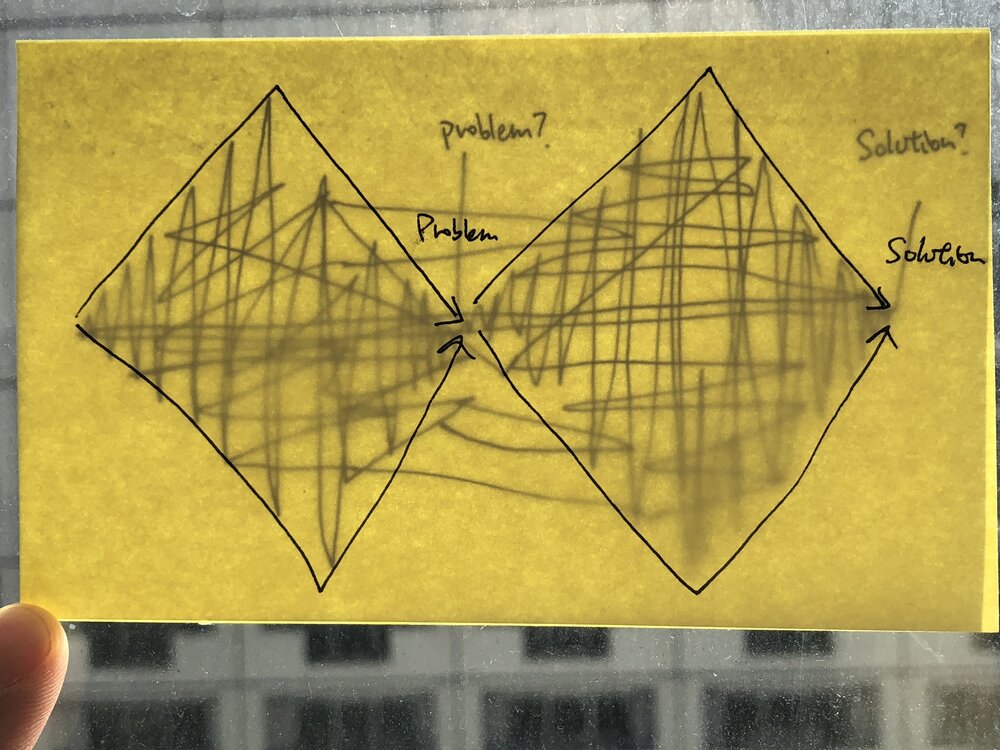Why design thinking should be renamed
 Double Diamond – Theory vs Reality
Double Diamond – Theory vs Reality
Design thinking is a buzzword that I really dislike. It isn’t just that it’s a buzzword, but that it is an inaccurate buzzword. “design thinking” is a problematic name, as it connotes that “it’s just enough to think”, and it also connotes that it is sufficient to come up with ideas. It also connotes Post Its: as a CIID instructor once said to us, “sometimes people mistake using Post Its as real work; sometimes using Post Its IS real work.”
Perhaps the biggest problem with the term “design thinking” is that it connotes that design is just about thought and thinking, and that just “thinking” is enough
Instead of “design thinking”, maybe a more accurate term is “design seeing”, which is about empathy and learning to see in another’s shoes. It’s about the superpower that allows you to see what others see with unbiased clarity, to feel what others feel with unfiltered intensity.
Instead of “design thinking”, maybe it’s about “design making and trying”. It’s about sketching rough low fidelity prototypes, it’s about making, folding, pasting, hot-gluing something that can be pushed, pulled, pressed. And from those, it’s about exploring intuitions and hunches that are subconscious manifestations of one’s cumulative experience. it’s about exploring the unintelligible, with its unarticulated intelligence. Because until you make something and try it out, you can’t really tell if the idea is good or bad: you HAVE to test it.
And by seeing, making and trying, one experiences, which then shifts one’s view and perspectives, generating different thoughts.
So perhaps “design thinking” is the outcome, whereas the process is really about “design seeing, making and trying”.
Another problem with the term “design thinking” is that the intellectually strong tend to dismiss it, because it’s intellectually simple and obvious. It’s like the difference between pornography and real-life sex, or the difference between watching a ball game vs playing. One intellectually knows the difference between theory vs reality, but the experienced reality is quite different.
The biggest problem is that, one just thinks it’s enough to have the idea, when in actual fact, making and trying causes one to realize that having the idea is just the first 1% of the journey. Being forced to make and try, causes one to realise that there IS a whole new world of intelligence in making and trying: for instance, in our physical computing and Materials of Electronics class, we had to make our own buttons, which turned out to be super unreliable: in the end, for my final project prototype, I forked out the money to buy a reed switch off-the-shelf, as it had already been tested and QCed.
Updated date 17 July 2020